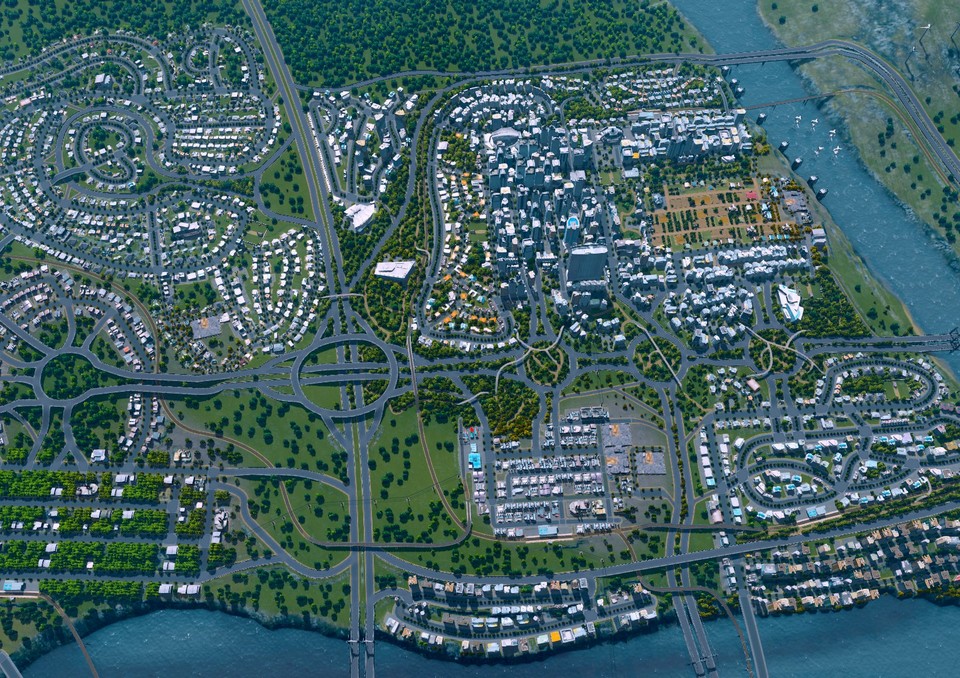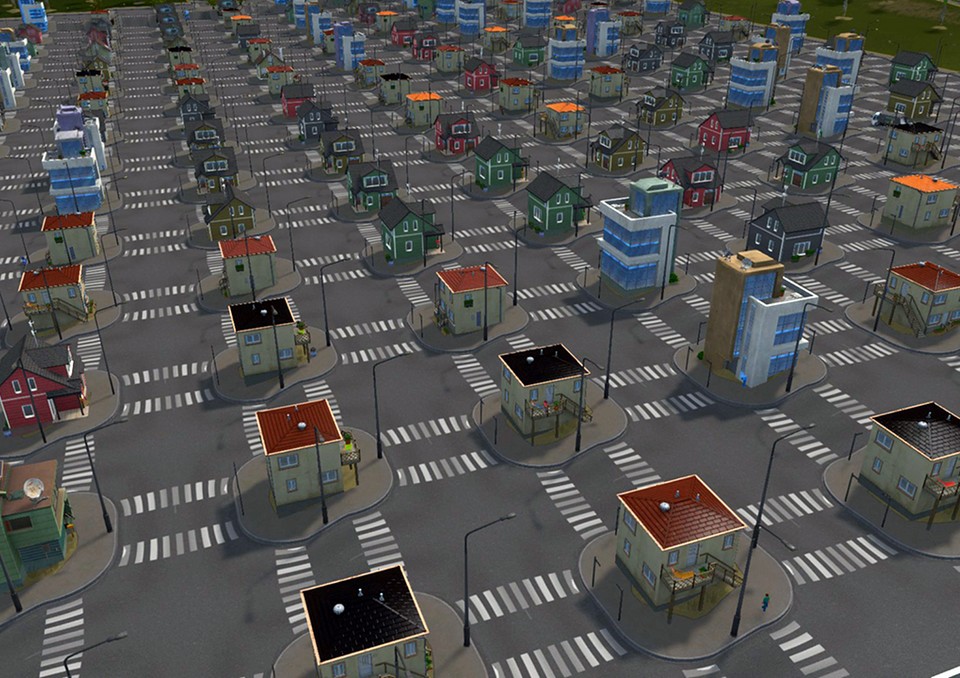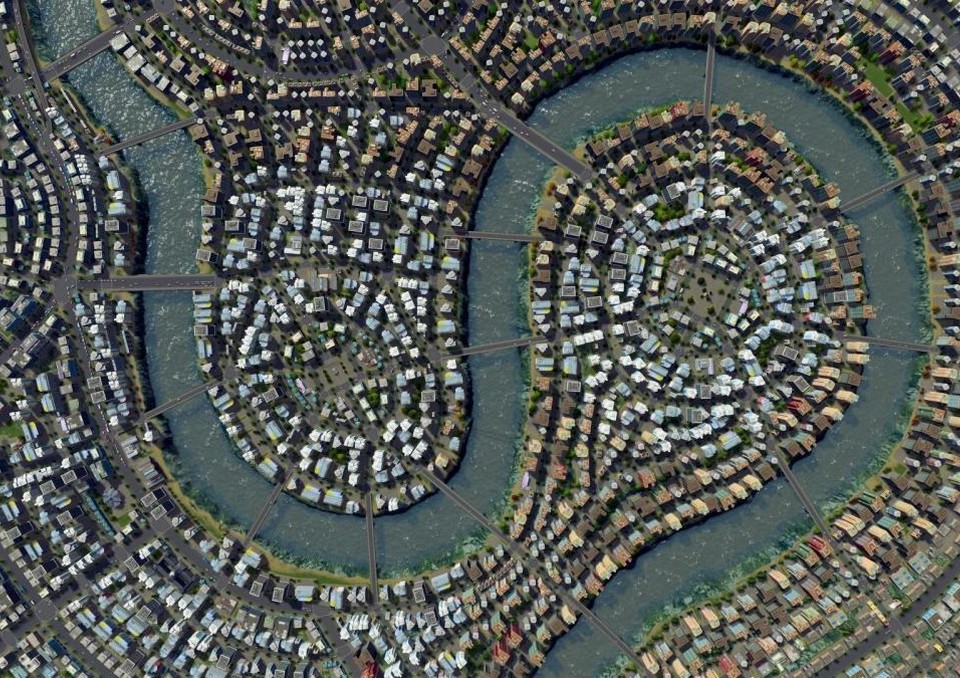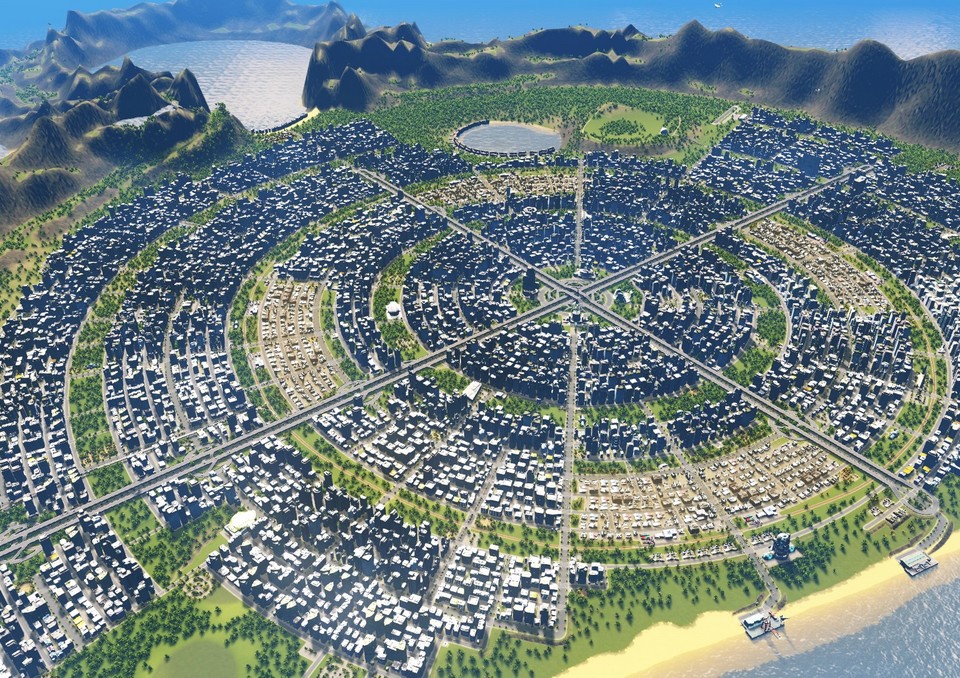The Finns from Colossal Order, remembered by many for Cities in Motion – a successful transportation system simulator – have now released the real city-building Cities: Skylines. Let’s try to find out what turned out in the end: another fruitless attempt to surpass SimCity or a real revolution in the genre.

So, we have to try ourselves in the traditional role of the offscreen mayor, whose task is to “grow” the city and lead it to prosperity. The land we will be exploring is represented by several types of maps to choose from. There are not too many of them yet, but if we wish, we can draw our own, as well as our own objects: for this, the developers have provided a built-in editor and support for Steam Workshop.
But the size of the construction site is quite decent: the initially accessible area is small, but in the process of development we can buy more and more new cells, constantly expanding the territory of our city.
Everything begins traditionally – with the construction of roads, next to which we are allowed to place residential, commercial, industrial, and later office areas. There is no tedious “tutorial” here, but there is a system of prompts that teach us how to interact with certain mayoral instruments right in the process of playing. Such concern for the player is not at all superfluous: there are many subtleties in the game, without which everything will start to fall apart very quickly.

If we think that it is enough to draw a road and outline the roadside space into zones, and then calmly rest on our laurels, watching how our city grows, we will be very mistaken. Residents begin to move in – and immediately it turns out that they have nowhere to wash their hands, and e-mail refuses to work without electricity.
Communication is a very important part of Cities: Skylines gameplay. An unsuccessful engineering solution can easily ruin the entire population. For example, if we do not notice that there is a current in the river from which the city takes water, and we put the water intake structure below the drain, the residents will very quickly begin to get sick and die. No hospitals can help them unless the underlying problem is addressed.
However, this is not all. Suppose we did everything right, took into account the direction of the current, began to grow and develop. Why, after a while, the water in the dwellings still starts to stink, and the inhabitants of the settlement get sick? The fact is that the river into which we dump waste is gradually becoming polluted. The water intake station may well be in the “bad water” zone not immediately, but several years after its construction.
Cities: Skylines is full of such details. Take, say, the noise level. The silence is disturbed not only by the wind turbines that provide the city with energy, but also by shops and cars scurrying along the roads. Therefore, residents do not really like living at intersections, and the construction of a new highway next to a residential area may well force the townspeople to leave their seats and leave in search of a better life. They will be replaced by new ones, of course, but for some time after such an inept expansion, the population will decrease, not grow, as will income.

In fact, income-related issues require rubber nerves and steel … jaws from the mayor. The amount initially given to us for construction is not as large as we would like, and the maintenance of all the necessary communications, even in a very small regional center, is not cheap. The city is not settled instantly: even at a multiply accelerated pace, we still observe how the foundation grows, forests are exposed, a building is created – and only then, perhaps, the first residents will move into the house.
No, this does not mean that all buildings in the zones delimited by us are being erected simultaneously. Take turns, Mr. Mayor, take turns.
So what happens? We drew several roads, outlined the boundaries of the first quarters, laid communications. And then it remains only with increasing despair to watch how our meager savings are melting before our eyes?
Looking at the dashboard, you might think that Cities: Skylines simulates literally every aspect of modern city life. At any time, we can view information about the satisfaction of residents in general, determine the level of coverage of the population with educational institutions, health care, get acquainted with data on crime in the city and even request a demographic summary.
We will be shown how many people are born a year and how many die. They will help you to get acquainted with the cost of housing – its price, by the way, also depends on pollution, noise level and location. In general, the developers approached the matter thoroughly and efficiently – the interface makes a solid impression.

To slightly dilute this solidity with amusing, the creators added a system of notifications about the needs of the population, presented in a characteristic “twitter” format. That is, when, for example, the number of housing becomes clearly insufficient, we are informed about this not by a boring adviser or a faceless pop-up tip, but by the message: “I will buy an apartment in the city, I will consider any options #expensive_home.”
If all is well, in this very “Twitter” there are all sorts of irrelevant entries about TV shows, the latest scientific discoveries and requests to sit with the cat during the departure of the owners. It looks very cute and atmospheric.
There is really a lot of content in Cities: Skylines. There is also a city policy that allows us to decide whether we will, say, recycle waste for the sake of the environment, or forbid residents to keep pets, sacrificing their happiness for the sake of greater cleanliness. Moreover, all these rules can be established not only for all at once, but also for the inhabitants of certain areas, the boundaries of which we also define ourselves.
There are natural resources that can and should be developed. There are unique buildings that attract tourists, and, of course, the transport system, on which the developers once ate the dog.
Perhaps the only noticeable drawback of the game is the impossibility “inside the gameplay” to change the appearance of buildings. No, we can, of course, work on each house in the editor, but this is still fun for those who are especially stubborn. Unfortunately, it is impossible to choose the style of the building at the stage of building itself. So it will hardly be possible to build a copy of some London.